 |
|
| Issue #85 • January/February, 2004 |
“I want you to do an article on how to shoot a handgun accurately,” Dave Duffy told me. “Make it 2,500 or 3,000 words.”
Long ago, I would have answered, “Sure, and while I’m at it, how about a history of the world in, oh, 10,000 words or so?”
|
Today, with more than 45 years of handgunning behind me (yeah, I’m old, but I started early, too) I realize that you actually can cover this topic in a fairly short article. The reason is found in the classic statement of Ray Chapman, the first world champion of the combat pistol. “Shooting well is simple,” Ray said, “it just isn’t easy.”
I’ll buy that. It’s true that the handgun is the most difficult of firearms to shoot well. There’s less to hang on to. There’s a shorter radius between the front and rear sight than with a rifle, meaning a greater unnoticed human error factor in aiming. You don’t have that third locking point on the shoulder that you have with a long gun’s butt stock.
And few handguns have the inherent mechanical accuracy of a good rifle.
That said, though, you can get the most of your handgun’s intrinsic accuracy by simply performing marksmanship basics correctly. If the gun is aimed at the target, and the trigger is pressed and the shot released without moving the gun, then the bullet will strike the mark. That simple. We need a few building blocks to construct this perfect shot, however. Let’s build the structure brick by brick.
|
I teach my students a five-point “pre-flight check list” to go through before they fire the shot. As with any structure, you start from the bottom up. Those points are: 1) Strong stance. 2) High hand grasp. 3) Hard grip. 4) Front sight. 5) Smooth rearward roll of the trigger.
The “power stance”
I’ve found that stance is the one thing I’m likely to have to correct first, even when teaching the experienced shooter. The edgeways stance of the duelist is necessary for skateboarding or surfing, but counter-productive to good shooting. If one heel is behind the other, the body does not have good lateral balance and will tend to sway sideways. (The miss will most commonly go toward the strong hand side.) If the feet are squared off parallel, in the old “police academy position” so often seen on TV, the body does not have good front to back balance, and the shots will tend to miss either high or low, most commonly the latter.
You want to be in a fighter’s stance, a boxer’s stance, what a karate practitioner would call a “front stance.” The lower body needs a pyramidal base, a triangle with depth. If you are right handed and firing with your strong hand only, the pelvis wants to be at about a 45 degree angle vis-à-vis the target, with your left leg to the rear. If you are shooting two-handed and are right hand dominant, the hips still want that 45-degree angle but the left leg should now be forward and the right leg back. Now you’re balanced forward and balanced back, balanced left and balanced right. It’ll be easier to hold the gun on target.
In rapid fire, the shoulders want to be forward. This will get body weight in behind the gun and help control recoil. For very precise slow fire, some shooters like to cantilever the shoulders to the rear. This may make the gun seem to hang steadier with less effort, but it will cause the gun to jump up sharply upon recoil. This not only slows down your rate of sustained fire, but subconsciously, the more the muzzle jumped at the last shot, the more likely you are to jerk the trigger on the next one. Personally, I use the power stance with the shoulders at least slightly forward even in slow fire. Master shooters have a phrase that helps them remember this principle more easily: “Nose over toes.”
|
High hand grasp
With a double action revolver, you want the web of your hand all the way up to the rear edge of the backstrap, as shown in the accompanying photos. With a single action frontier-style revolver with the plow-handle shape grip, you still want a high hand grasp. On a semiautomatic pistol, you want the web of the hand so high that a ripple of flesh is seen to bunch up behind the backstrap of the grip at the top edge, where the grip safety would be on a 1911 style pistol.
The higher the hand, the lower the bore axis. This means much better control of muzzle jump and less movement of the pistol upon recoil. Since most handguns, particularly semiautomatics, are designed to be shot this way, it means that you will find it easier to press the trigger straight back as you make each shot. If your hand is too low on the “handle,” a straight rearward pressure on the trigger will tend to pull the muzzle down, placing the shot low.
|
A semi-auto is designed to operate as the slide moves against the abutment of a firmly held frame. A low grasp allows the muzzle to whipsaw upward from recoil as the mechanism is automatically cycling, diverting momentum from the slide through the frame. Now the slide can run out of momentum before it has completed its work. This is why holding a pistol too low can cause it to jam.
All these problems are cured with the high hand grasp.
Hard grip
In the debate about shooting techniques in the saloon after all the guns have been locked away, this issue will take up about three rounds of drinks. In the old days, the “quail grip” was taught. “Imagine yourself holding a live quail. Hold it just firmly enough that it can’t fly away, but not firmly enough to hurt it.”
We aren’t talking about birdies. We’re talking about guns. Specifically, we are talking about powerful defensive handguns and hard-kicking Magnums and large calibers used for outdoor sports such as hunting. The harder we hold them, the less they kick and jump. The less they kick and jump, the more efficiently we can shoot them.
|
This writer strongly recommends the “crush grip.” How hard do you hold the handgun? As hard as you can. It was once advised to intensify your grip until tremors set in, and then back off until they stopped. In the real world, under stress, there’s going to be some tremor anyway. Get used to it now. Hold the gun as tightly as you can and let it tremor.
The key is this: keep the sights straight in line. If the sights are in line, and the hand is quivering, the sights will quiver in the center of the target. When the shot breaks, the bullet will strike the center of the target. Once it has been center-punched, the target will neither know nor care that the launcher was quivering before the projectile took flight.
Any marksmanship expert will tell you that consistency of grasp is a key to consistent accuracy. As stress levels change during shooting, which is really a multi-tasking exercise that gives you a lot to think about, the consistency of grasp can change too. If you think about it, there are only two ways to grasp the pistol with uniformity.
One is to hold it with virtually no pressure at all. This will give you poor control of recoil.
The other is to hold it as hard as you can, for each shot and every shot.
The hard hold has some other benefits. If you have accustomed yourself to always hold a pistol with maximum grip strength, you are much less likely to ever have it knocked or snatched from your hand. Moreover, you now have the ultimate cure for a handgunner’s malady known as “milking.”
“Milking,” taken from the hand’s movement when milking a cow’s udder, occurs when the index finger closes on the trigger and the other fingers sympathetically close with it, changing the grasp and pulling the sights off target. Most commonly, this will pull the shot low and to the side of what you were aiming at. It is a function called “interlimb response.” When one finger closes, the other fingers want to close with it.
|
Do this simple exercise. Relax your hand, and pretend to be holding a handgun. Now, move the index finger as if rapidly firing a handgun with a heavy trigger pull. You will see the other fingers reflexively contracting along with it. You have just seen and experienced milking in action.
Now do the same, but this time with all but the index finger closed as tightly as you can hold them. As you run the index finger, you’ll feel the tendons trying to tighten the grasp of the other fingers, but you’ll see that they actually can’t. That’s because the tight grip has already hyperflexed the fingers, and they can’t tighten any more. The milking action has now been eliminated.
Thumb position is negotiable. Generations of shooters with the GI 1911 .45 learned to shoot with the thumb high, resting on the manual safety. Many competitive target shooters prefer to point the thumb straight at the target. This straight thumb position seems to align the skeleto-muscular structure of the hand in a way that allows the index finger its straightest rearward movement. With powerful guns, curling the thumb down to add grasping strength and enhance control is a valid technique. A lot of it depends on how the gun fits your hand. The controls may also be a factor. With a conventional double action auto that has a safety catch mounted on the slide (Beretta, S&W, and Ruger to name just a few), I like my thumb to be where it can not only push the lever into the “fire” position, but verify that the lever is in fact in the position it should be in.
Trigger finger contact? The old time marksmen liked the very tip of the finger, on the theory that it offered more sensitivity. With a handgun that has a very light trigger pull, there may be some validity to that. Still others use the pad of the finger, which is basically the point at which you find the whorl of the fingerprint.
Personally, I’ve learned that contacting the trigger at the crease of the distal joint, the spot old time revolver masters called “the power crease,” gives me much more leverage and therefore more control. This is particularly true on guns whose trigger pulls may be long and/or heavy: the double action handgun, the Glock, etc. A lot of this will depend on hand size and shape in relation to gun size and shape. There are many variables in the interface between human and machine.
Front sight
The conventional sight picture with conventional handgun sights is the one you see in the marksmanship manuals. The front sight is centered in the notch of the rear sight. The top of the front sight is level with the top of the rear sight, and there is an equal amount of light on either side.
Human vision being what it is, you can’t focus on the sights and the target at the same time. Actually, you can’t focus on both the front and the rear sight at the same time, either. Once the target has been identified as something you need to shoot, you no longer need your primary visual focus on it. Primary focus now goes to the aiming indicator, the front sight. Think of it as a fighter pilot would: “enemy craft sighted, lock missiles on target.” The way we lock the handgun’s missiles onto the target is by focusing on its front sight.
|
Failing to properly focus on the front sight is a widespread problem among shooters. Every good shooter with iron sights (as opposed to red-dot optics or telescopic sights) whom you know can probably remember when he or she experienced “the epiphany of the front sight.” The realization, “So that’s what the coach meant when she said to watch the front sight!”
Watch the front sight hard. Apply your primary visual focus there. Look at it until you can see every little scratch in the machining on its surface. If it has a dot on it, focus on it until the dot looks like a soccer ball. Then you, too, will experience the epiphany of the front sight, and will see your shot groups tighten as if by magic.
Smoothly roll the trigger
Remember the prime directive: once the gun is aimed at the target, the trigger must be pulled in a way that does not pull the muzzle off target before the shot is fired. This means that the trigger must come straight back.
You want a smooth, even, uninterrupted pull. You can say to yourself, “press the trigger.” You can say to yourself, “sque-e-eze the trigger.” I say to myself, “roll the trigger,” because that connotes the smooth, consistent, uniform pressure I’m trying to apply. You don’t want the shot to truly surprise you, of course, because that would be an unintentional discharge. Rather, you want the exact instant of the shot to surprise you, so you don’t anticipate it and convulsively jerk the shot off target.
Experts agree that the best way to get the trigger pull down, once you know what it’s supposed to be, is to practice it. Dry-fire, or “clicking” the empty gun, is the best practice. The position of the sights when the gun goes “click” will tell you whether the shot would have been on target or not. The more thousands of these repetitions you perform, the more the proper trigger pull will be hard-wired into your mind and body to the point where you can do it perfectly in an emergency without consciously thinking about the details.
|
The best way to learn it is with what I dubbed the “exemplar drill.” Find an accomplished pistol shooter to assist you. Take a strong stance and firm grasp, and hold the gun on target. Let your index finger barely touch the trigger, and let that finger go limp. Ask the seasoned shooter to place his gun hand over yours, and his trigger finger over yours, and let his finger press yours straight back against the trigger. After several repetitions, you’ll be feeling what he feels when he makes the perfect shot. This is the easiest way to learn what a good trigger pull feels like.
Now progress to the two of you pulling the trigger together at the same pace. After some of that, you’re ready for the third stage. Now it’s your finger pulling the trigger, his lightly touching yours to monitor its progress. Once you’ve got that down, let the coach sit back and watch as you “fly solo,” making corrections as necessary.
Some suggestions
Observe all rules of safe shooting and safe gun handling, of course. Start with paper or cardboard targets in close, at three to seven yards. If your shot is off the mark by three inches at 25 yards, it might have been just the natural limits of the gun’s accuracy. It might have been the ammo. It might even have been the wind. But if you’re off by three inches at four yards, you’ll know exactly what it is. The closer you are, the easier it is to correct whatever caused the bad hit on the target. Once you’re hitting in tight groups at close range, move back incrementally. As the distance increases, so does the challenge.
The world champion was right when he said it was simple, it just wasn’t easy. The “not easy” part is taken care of in repetition. Fortunately, repetition means shooting, and shooting is fun.
Good luck. Stay safe. And enjoy.


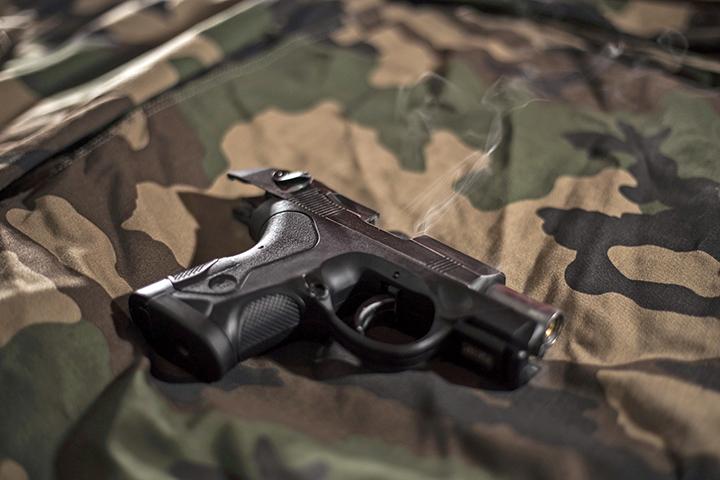













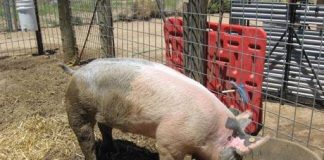




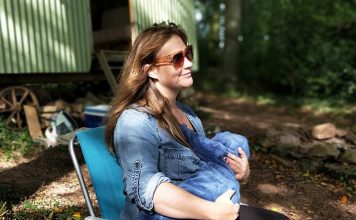

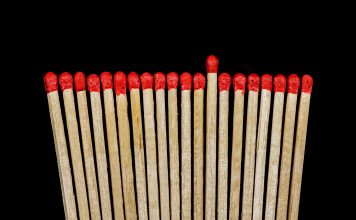
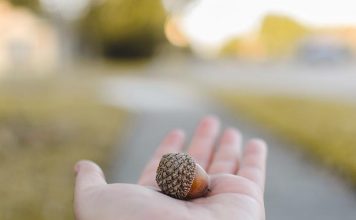

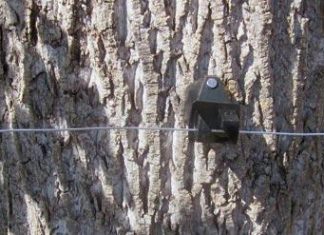
Using the “power crease” has given me greater control because of the lesser effort it takes for my finger to move the trigger. That and power grip have made my precision take a leap forward. Thanks!
Mr. Ayoob, well done. I have improved my shooting. The ‘hard grip’ really helps. I am a Marine and fire expert with a rifle; however, handguns are not rifles. I have always struggled with handguns. It is hard work. I own a long-slide Springfield V-16. I love it. The longer slide gives me a good sight radius and the porting helps with recoil. But the ‘hard grip,’ superlative! Semper fi!
Clear insightful instruction. Thank you.